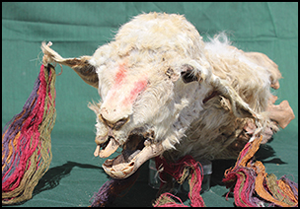Crossref Citations
This article has been cited by the following publications. This list is generated based on data provided by
Crossref.
Wakild, Emily
2021.
Learning from the llama: on the broad contours of cultural contributions and geographic expansion.
História, Ciências, Saúde-Manguinhos,
Vol. 28,
Issue. suppl 1,
p.
141.
Socha, Dagmara M.
Sykutera, Marzena
and
Orefici, Giuseppe
2022.
Use of psychoactive and stimulant plants on the south coast of Peru from the Early Intermediate to Late Intermediate Period.
Journal of Archaeological Science,
Vol. 148,
Issue. ,
p.
105688.
Flores-Blanco, Luis
Altamirano, Alfredo J.
Villacorta, Marco
Capriles, José M.
Estrada, Flavio
Herrera, Katia
Llosa, Melchor
Chávez, Eduardo
and
Alarcón, Carmela
2022.
Reconstructing the sequence of an Inca Period (1470-1532 CE) camelid sacrifice at El Pacífico, Peru.
Journal of Archaeological Science: Reports,
Vol. 41,
Issue. ,
p.
103247.
Lane, Kevin
Beresford-Jones, David
Coll, Luis
Marsh, Erik
Scaife, Rob
Greco, Catriel
Oros, Oliver Huaman
Herrera, Alexander
Grant, Jennifer
and
French, Charles
2022.
Pre-Hispanic anthropogenic wetlands in the upper Ica drainage, south-central Andes: dating and context.
Antiquity,
Vol. 96,
Issue. 389,
p.
1251.
Valdez, Lidio M.
and
Bettcher, Katrina J.
2023.
The founding of the Inca provincial center of Tambo Viejo, Acarí, Perú.
Ñawpa Pacha,
Vol. 43,
Issue. 2,
p.
249.
Valdez, Lidio M.
Bettcher, Katrina J.
and
Rúales, Mario M.
2024.
Spaniards at the Inka Provincial Center of Tambo Viejo, Acarí Valley, Peru.
Journal of Anthropological Research,
Vol. 80,
Issue. 3,
p.
312.
